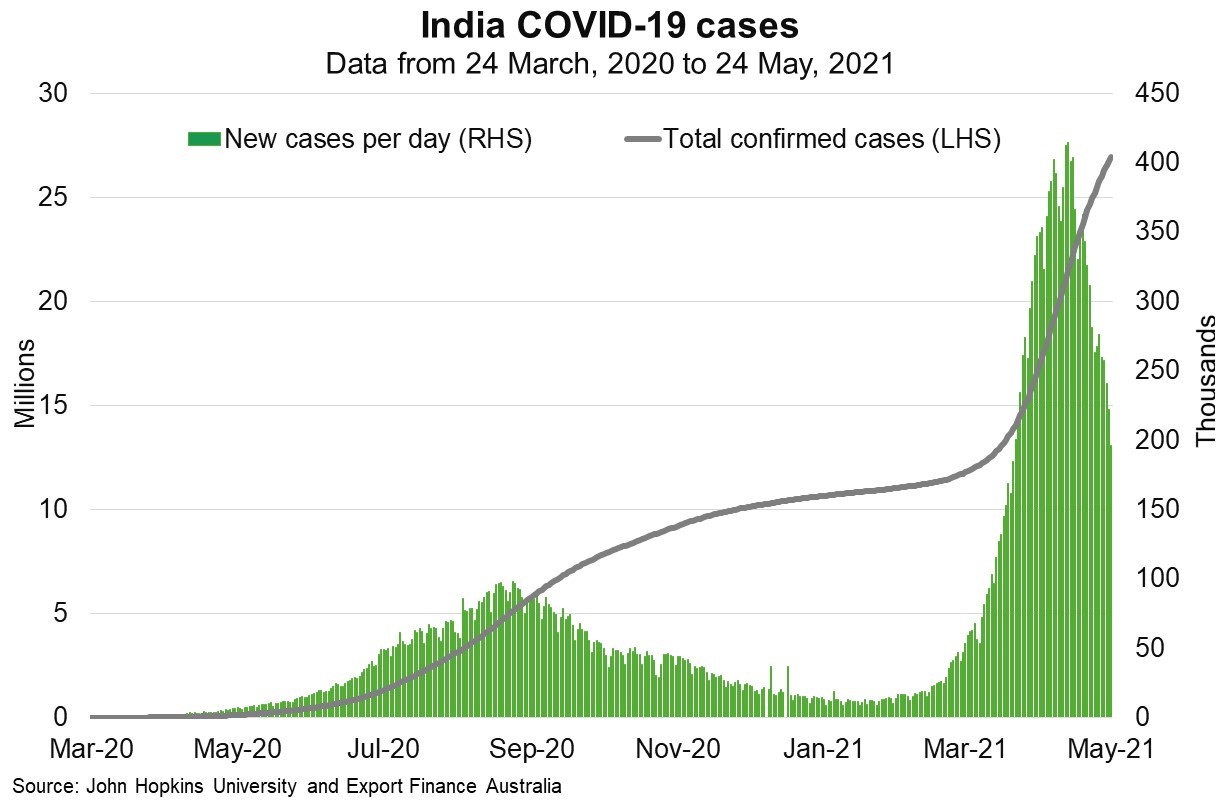India—Surging COVID-19 infections hit recovery
India’s economy was expected to bounce back fast from the COVID-19 pandemic before a catastrophic second wave struck. The recent spike in COVID-19 infections underscores the rapid speed at which the virus can spread and highlights the uncertainty around economic forecasts (Chart). Forecasters are predicting India’s second wave will cause a short-term economic shock confined to the April-June quarter, but projections vary from - 1.5 (Nomura) to -15% (JP Morgan). Many states, including Maharashtra, Delhi and Karnataka (accounting for more than 25% of India’s GDP), may extend existing lockdowns. Combined with rapid progress on vaccine roll-out—11% of the population have received at least one vaccine dose—this may see authorities bring the second wave under control in the next quarter. But more severe downside scenarios can’t be ruled out. In the near term, lower Indian GDP growth could weigh on demand for, and exports of, Australian gold and coal, which had been rising sharply in recent months.
In the long-term, the structural drivers of the Indian economy remain sound, including India’s youthful demographics and appetite for infrastructure, providing a pathway for sustained growth. However, the pandemic could set back growth in middle class consumption. According to the Pew Research Center, India’s middle class—defined as those earning between US$10 and US$20 per day—has fallen by one-third to 66 million people in 2020 from 99 million before the pandemic. Meanwhile, the number of poor is expected to have reached 134 million, more than double the 59 million projected prior to the pandemic.

